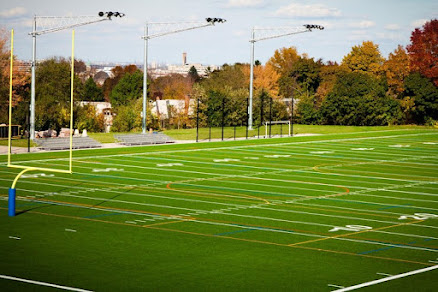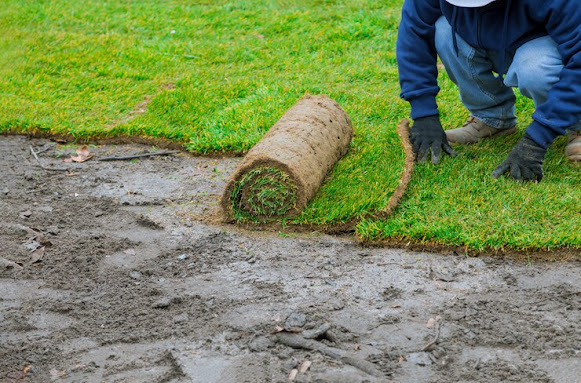What Are the Five Types of Landscape?
When planning your outdoor space, it’s easy to get overwhelmed with endless options and styles. That’s why exploring 20 Home Landscaping Ideas can be a great starting point to spark creativity and set the foundation for your dream yard. At Lakota Design Group, we believe that understanding the main categories of landscaping is key to making your vision both practical and beautiful. In this article, we’ll walk you through the five types of landscape and how they can elevate your home’s curb appeal, functionality, and value.
Understanding the Five Types of Landscape
Before diving into details, let’s define what landscape types really mean. Essentially, these categories represent broad approaches to outdoor spaces, each focusing on aesthetics, environment, and purpose. Whether you’re drawn to natural, traditional, or modern designs, there’s a landscape style to suit your lifestyle and property.
The five types of landscape most homeowners and professionals consider are:
Residential Landscaping
Commercial Landscaping
Industrial Landscaping
Interior Landscaping
Specialty Landscaping
These are recognized as popular landscape design classifications, and within each, you’ll also find different styles of landscape design that can make your project unique.
1. Residential Landscaping
When planning your outdoor space, it’s easy to get overwhelmed with endless options and styles. That’s why exploring 20 Home Landscaping Ideas can be a great starting point to spark creativity and set the foundation for your dream yard.
Residential landscaping is the most common type and focuses on designing outdoor spaces around private homes. From front yards to backyards, this type emphasizes comfort, beauty, and functionality.
A well-planned residential landscape typically includes:
Lush lawns and low-maintenance plants
Decorative features like pathways, patios, or pergolas
Lighting to highlight key areas and improve safety
Garden beds or water features for added elegance
Many homeowners also draw inspiration from types of natural landscapes such as woodlands, meadows, or coastal settings to create a backyard retreat. Whether you want a classic suburban look or a modern Zen garden, Lakota Design Group specializes in tailoring designs that match your lifestyle.
2. Commercial Landscaping
Commercial landscaping focuses on businesses, offices, and public properties. Here, the goal is not just beauty but also creating a welcoming and professional atmosphere for clients, employees, and visitors.
Elements often used in commercial landscaping include:
Large-scale greenery and shade trees
Walkways, benches, and seating areas
Seasonal flowers for visual appeal
Functional irrigation systems to maintain upkeep
In cities like landscape design San Jose, businesses prioritize sustainable and eco-friendly designs, making commercial landscaping both attractive and environmentally responsible.
3. Industrial Landscaping
Industrial properties—such as factories, warehouses, or production sites—may not be the first places you think of when it comes to landscaping. However, industrial landscaping plays a crucial role in softening the appearance of large structures, promoting environmental responsibility, and improving employee morale.
Features often used in this type include:
Noise-buffering trees and shrubs
Erosion-control planting
Simple, low-maintenance greenery
Designated green spaces for staff relaxation
By incorporating thoughtful elements, even large industrial complexes can blend more harmoniously with their surroundings. This is where different styles of landscape design help balance practicality with aesthetics.
4. Interior Landscaping
Not all landscaping is outdoors. Interior landscaping involves incorporating natural elements inside buildings—like offices, shopping centers, and hotels.
Common elements in interior landscaping:
Living walls or vertical gardens
Indoor trees and potted plants
Water features like fountains or ponds
Decorative rock and stone arrangements
The trend of bringing the outdoors in has grown popular in urban areas such as landscape design San Jose, where limited outdoor space makes interior greenery a perfect solution. With the help of professionals like Lakota Design Group, businesses can transform their interiors into refreshing, eco-friendly spaces.
5. Specialty Landscaping
Specialty landscaping is all about customization. This category includes themed gardens, eco-landscapes, and designs tailored to unique environments. It’s often inspired by types of natural landscapes or cultural aesthetics.
Some examples of specialty landscaping are:
Japanese Zen gardens
Tropical resort-style yards
Desert xeriscaping (water-wise landscaping)
Wildlife-friendly landscapes with pollinator plants
These creative approaches allow homeowners and businesses alike to go beyond standard layouts and express individuality. Specialty landscaping is also a favorite choice for clients looking to highlight sustainability or cultural heritage.
How the Five Types Fit Into the Bigger Picture
Understanding these categories is the first step. But within each type, you’ll find popular landscape design classifications that provide more detailed frameworks. For example, residential landscaping can include cottage-style gardens, modern minimalist yards, or Mediterranean-inspired courtyards. Similarly, specialty landscaping can branch into eco-friendly xeriscaping or lush tropical escapes.
When looking at different styles of landscape design, think about your goals: Do you want a low-maintenance yard? Do you need a professional look for your office building? Or are you aiming for a show-stopping specialty garden? By matching your vision with the right landscape type, you ensure that the end result aligns with both form and function.
Why Choosing the Right Landscape Type Matters
Each landscape type has its own benefits:
Residential Landscaping: Boosts curb appeal and enhances family living.
Commercial Landscaping: Creates positive first impressions and supports branding.
Industrial Landscaping: Improves environment and softens industrial looks.
Interior Landscaping: Enhances indoor spaces with natural beauty.
Specialty Landscaping: Offers personalization and unique themes.
In areas like landscape design San Jose, where sustainability and space are top priorities, choosing the right type can make your property stand out while being practical. With expert guidance from Lakota Design Group, you can avoid common pitfalls and achieve a professional, lasting design.
Final Thoughts
Landscaping isn’t just about planting flowers or mowing the lawn—it’s about understanding the main categories of landscaping and applying them in ways that suit your needs. From the comfort of residential yards to the creativity of specialty gardens, the five types of landscape offer endless possibilities.
At Lakota Design Group, we take pride in helping homeowners and businesses bring their vision to life through custom solutions. If you’re ready to explore the perfect landscape design for your property, don’t wait—contact us today and let’s create something extraordinary together.
FAQs
Q1: What is the most common type of landscape for homes?
Residential landscaping is the most common, as it focuses on outdoor spaces around private properties. It balances functionality, beauty, and lifestyle needs.
Q2: Can I combine more than one type of landscape on my property?
Yes! Many homeowners blend residential and specialty landscaping, or even integrate interior landscaping features to create a cohesive, personalized design.
Q3: Which type of landscaping is best for low-maintenance upkeep?
Specialty landscapes like xeriscaping or minimalist residential designs often require less water and maintenance, making them ideal for busy homeowners or eco-conscious clients.


Comments
Post a Comment